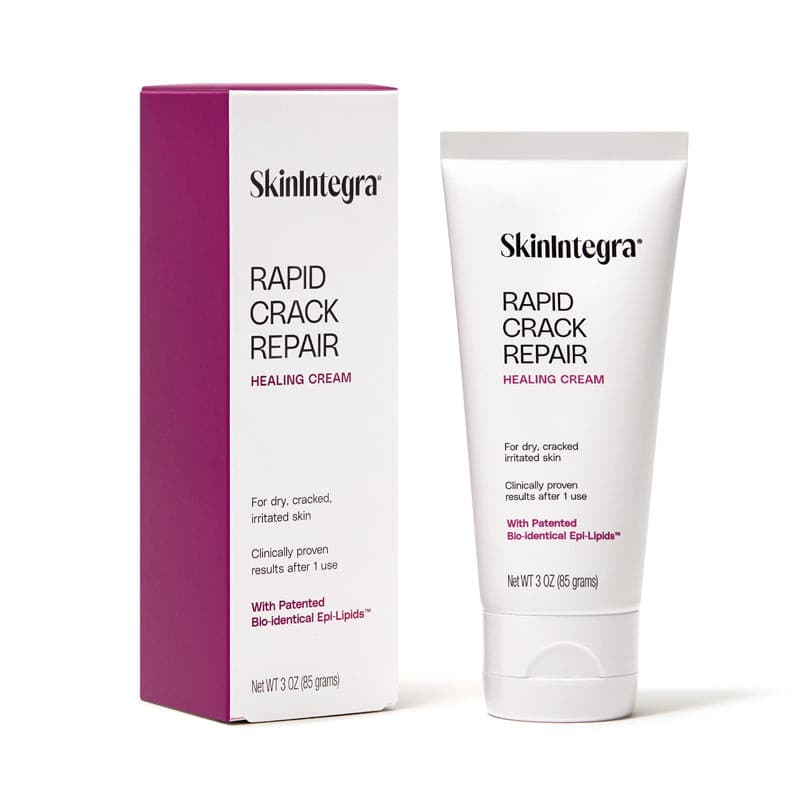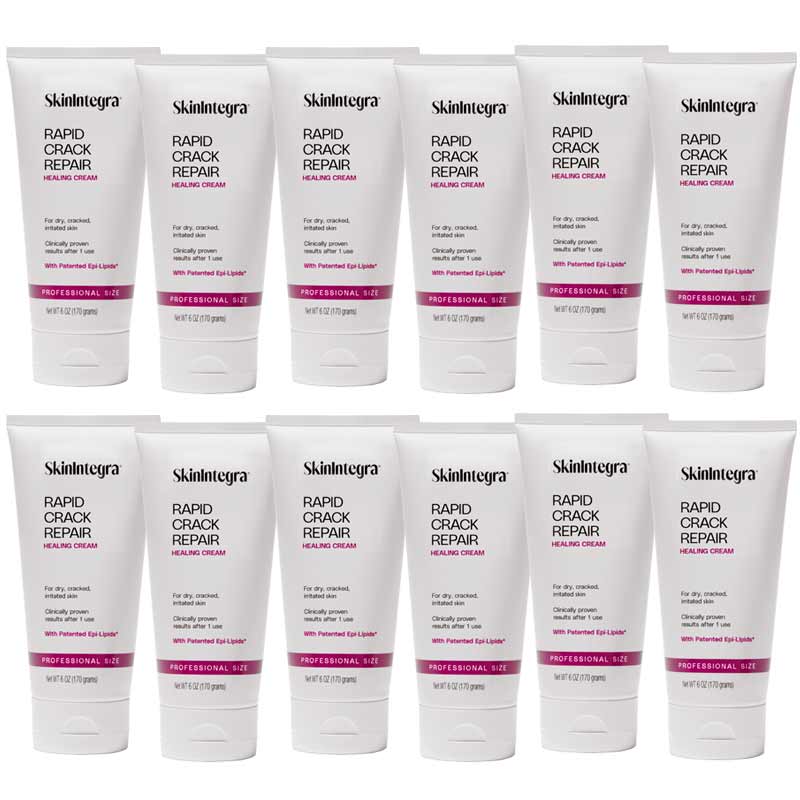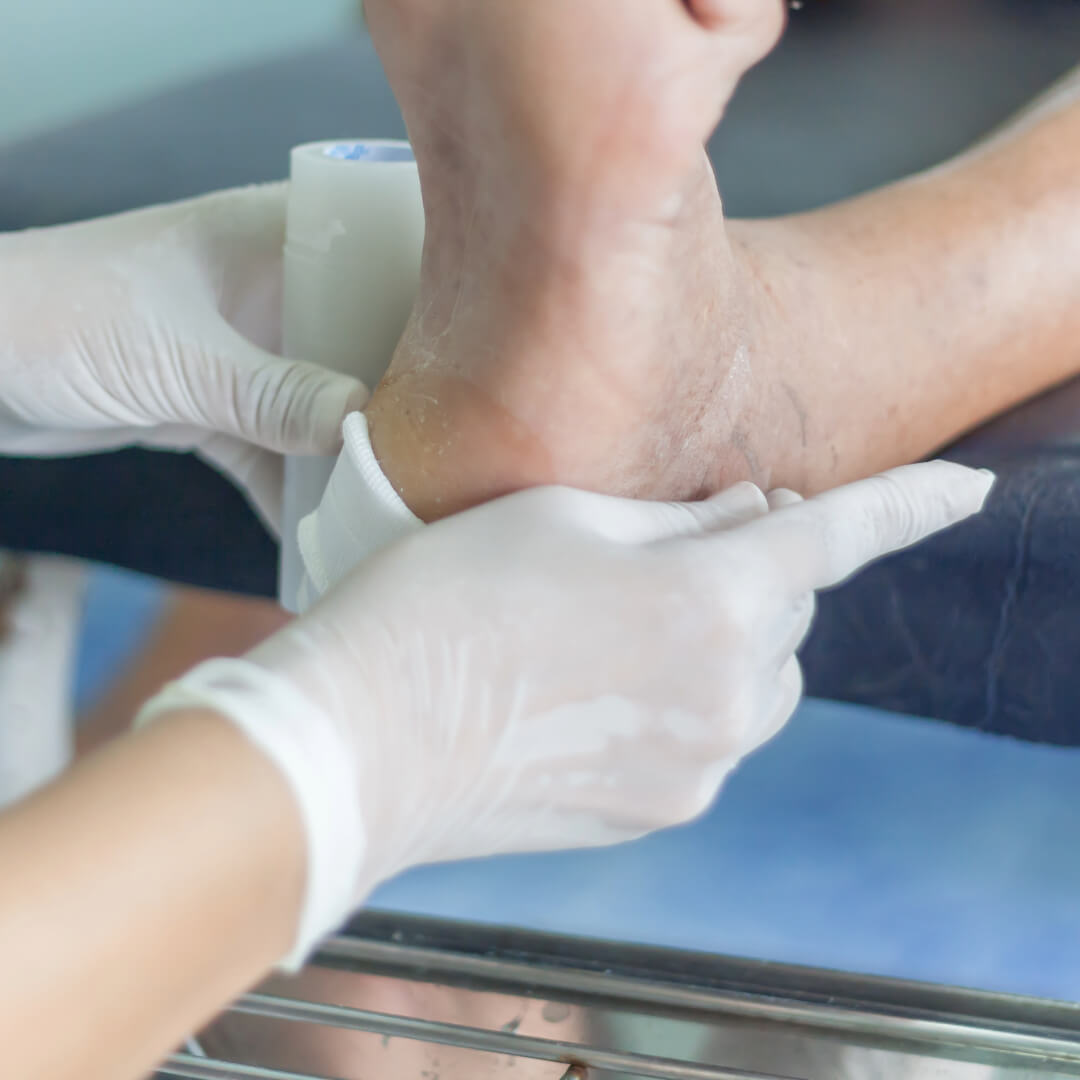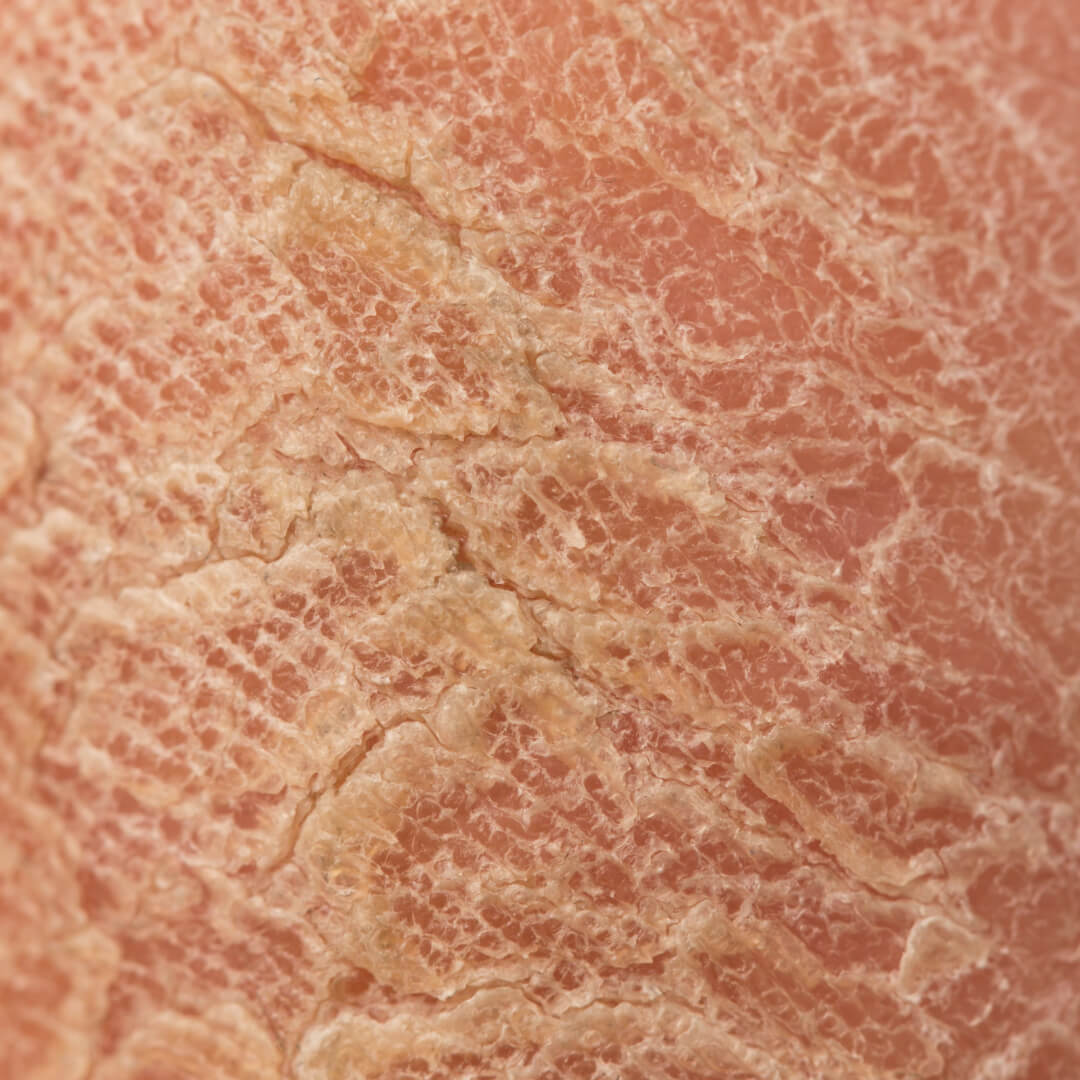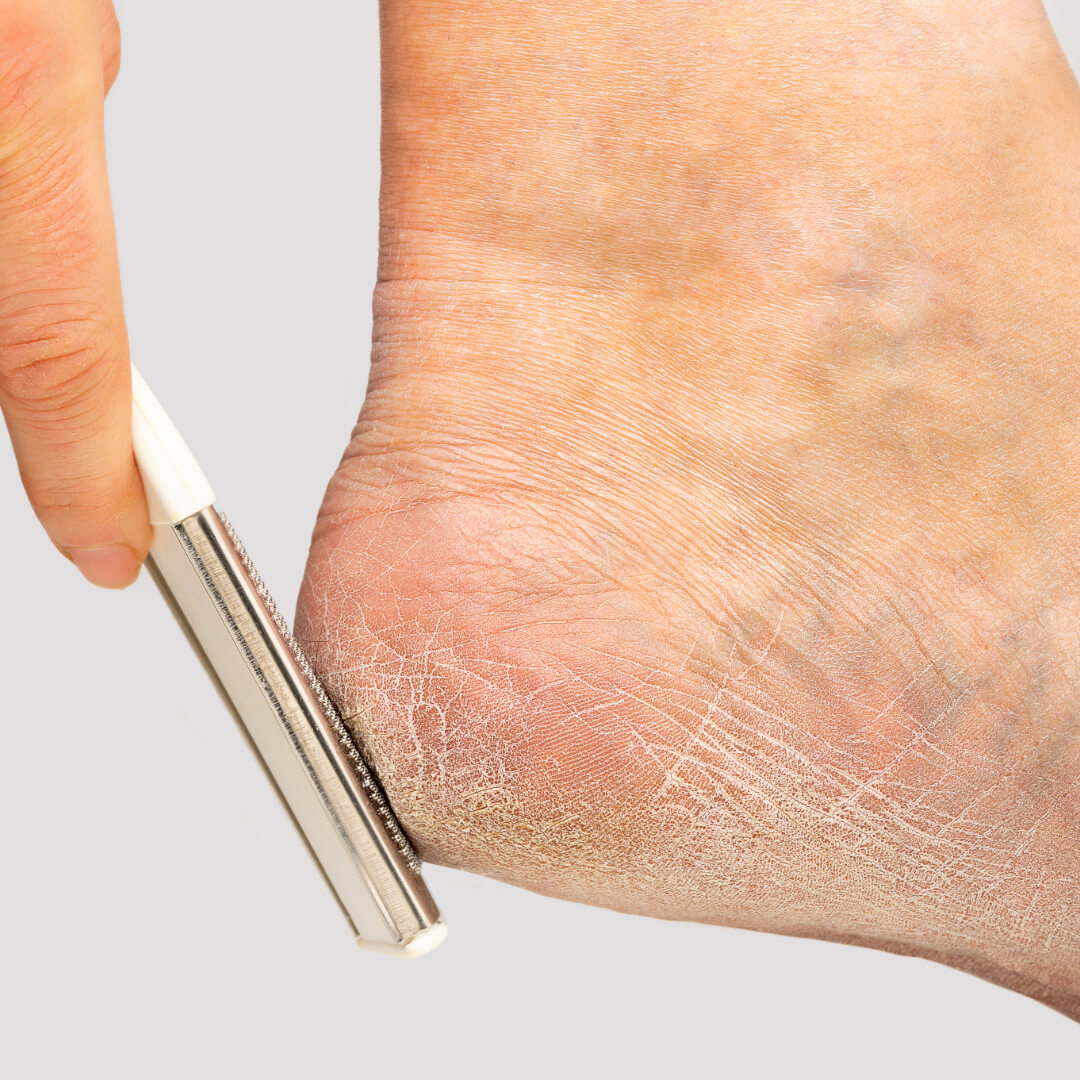If you or someone you care for has diabetes, the threat of a foot ulcer can feel overwhelming. Foot ulcers are open sores that usually develop on the bottom of the feet. They are common—about 15–25 % of people with diabetes will experience a foot ulcer in their lifetime—and they are serious. Every 30 seconds an extremity is amputated because of diabetes complications, most often secondary to foot ulcers. Worse still, more than 70 % of people who have had a foot ulcer will develop another ulcer within five years.
The good news is that prevention works. Keeping your feet healthy through careful daily care, addressing risk factors, and partnering closely with your healthcare team can dramatically lower your risk of ulcers and amputation. This article will help you understand why ulcers develop, identify the warning signs, and implement a prevention strategy tailored to diabetic skin—including the role of SkinIntegra Rapid Crack Repair Cream.
Jump to the SkinIntegra section
What Is a Diabetic Foot Ulcer?
A diabetic foot ulcer (DFU) is an open wound that usually forms on the plantar (bottom) surface of the foot. Poorly controlled blood glucose damages nerves (neuropathy) and blood vessels (peripheral arterial disease, or PAD). When combined with foot deformity and minor trauma—like a shoe rubbing against your toes—this damage can cause skin breakdown and slow healing. Ulcers may become infected, leading to hospitalization and, in severe cases, amputation.
Risk Factors
You are more likely to develop a DFU if you have one or more of the following risk factors:
-
Previous history of ulcers or amputation – recurrent ulcers are common.
-
Peripheral neuropathy – loss of sensation means you might not feel a blister or cut.
-
Foot deformities – bunions, hammertoes or Charcot foot create pressure points.
-
Peripheral artery disease (PAD) – poor circulation slows healing.
-
Diabetic nephropathy (kidney disease) – especially end‑stage kidney disease.
-
Poor blood‑glucose control – high blood sugar damages nerves and vessels.
-
Smoking – decreases circulation and delays healing.
Understanding these risk factors helps you and your podiatrist focus on prevention strategies tailored to your needs.
Why Prevention Matters
Foot ulcer treatment is complex and expensive. Wounds graded as mild (Wagner Grade I) can cost around $3,000 in industrialized countries, but complications that lead to amputation can exceed $100,000. Beyond the financial cost, foot ulcers negatively impact mobility, independence and quality of life. For podiatrists, preventing ulcers is part of holistic diabetic care—helping patients avoid pain, hospitalization and loss of limb.
Because ulcers recur so often, prevention isn’t a one‑time effort. It requires daily attention, proper skin care, appropriate footwear, control of underlying health issues and regular medical check‑ups. With consistent care, you can significantly reduce your risk.
Daily Foot‑Care Routine
Foot care is the foundation of ulcer prevention. Here is a routine that reflects current medical guidance and can be tailored to each individual.
Inspect Your Feet Every Day
Look at the tops, bottoms and sides of your feet and between your toes. Use a mirror or ask someone to help if you have difficulty reaching or seeing. Check for cuts, blisters, redness, swelling, calluses or changes in skin temperature. Early detection of issues allows for prompt treatment before they evolve into ulcers.
Wash and Dry Carefully
-
Wash your feet daily with warm (not hot) soapy water. If you have neuropathy, test water temperature with your elbow or forearm to avoid burns.
-
Dry thoroughly, especially between the toes. Moisture trapped between toes can lead to fungal infections.
-
Moisturize: Apply a gentle cream to the tops and bottoms of your feet, focusing on dry areas. Avoid putting moisturizer between the toes, where excess moisture can cause infection. Learn about urea vs. lactic acid for treating cracked heels and which one is better for diabetic skin.
Trim Toenails Properly
Keep nails short to prevent them from pressing on neighboring toes. Trim them straight across and gently file any sharp edges. Avoid cutting into corners, which can cause ingrown nails.
Choose Appropriate Socks
Wear clean, moisture‑wicking socks every day. Avoid tight socks or socks with prominent seams, which can create pressure points. Cotton‑wool blends are often recommended because they manage moisture well.
Protect Your Feet With Proper Footwear
-
Always wear shoes or slippers, even indoors. Going barefoot increases your risk of cuts and infection. Choose shoes made of breathable materials like leather or canvas.
-
Ensure your shoes fit properly—they shouldn’t pinch, rub or leave indentations. Consider diabetic footwear designed to reduce pressure points, and consult your podiatrist about custom inserts if needed.
-
Before putting shoes on, check the insides for pebbles or rough seams that could cause blisters.
Offload Pressure
If you have calluses, foot deformities or areas of high pressure, work with your podiatrist to offload them. Special shoes or orthotic devices can redistribute weight and reduce ulcer risk. Don’t attempt to remove calluses with chemical pads or over‑the‑counter corn plasters; these can burn the skin and create wounds. Learn why salicylic acid is unsafe for diabetic callus treatment.
Managing Underlying Health Conditions
Good diabetes management plays an essential role in ulcer prevention. According to prevention guidelines, control of blood glucose, blood pressure, lipids and smoking cessation are key measures. Here are ways to support overall health and circulation:
-
Maintain blood‑glucose control through medication, diet and regular monitoring. Elevated blood sugar damages nerves and blood vessels, increasing ulcer risk.
-
Monitor blood pressure and cholesterol with your healthcare team. High blood pressure and high LDL cholesterol contribute to vascular disease.
-
Stay physically active. Moderate exercise improves circulation and insulin sensitivity. The American Diabetes Association notes that exercise stimulates blood flow in the legs and feet. Choose low‑impact activities like walking in well‑fitting shoes (avoid walking if you have open sores).
-
Eat a balanced diet rich in lean proteins, whole grains, fruits and vegetables. If you have nutrient deficiencies (such as low omega‑3 fatty acids) that contribute to dry or cracked skin, a podiatrist or dietitian can provide guidance. Learn about cracked heels and nutritional deficiencies.
-
Quit smoking. Smoking constricts blood vessels, impairs wound healing and increases the risk of PAD.
-
Manage weight if you are overweight. Extra weight puts pressure on your feet and may exacerbate neuropathy.
Work With Your Care Team
Preventing ulcers is a team effort. A proactive partnership between patients, podiatrists and other healthcare providers yields the best outcomes.
Annual Foot Examinations
A comprehensive foot exam is recommended at least once a year for all people with diabetes. The exam includes checking pulses, nerve function (with a monofilament test), and looking for deformities or skin changes. High‑risk patients (previous ulcers, significant neuropathy or PAD) may need more frequent evaluations.
Regular Podiatry Visits
Podiatrists play a critical role in early detection of pressure points, fitting therapeutic footwear and educating patients. They can safely remove calluses or corns, provide orthotic devices, and coordinate wound care if needed. Always alert your podiatrist if you notice changes, such as redness, swelling or breaks in the skin.
Caregiver Involvement
If vision problems or mobility issues make self‑care challenging, enlist help from a family member or caregiver. Research suggests that if a patient is unable to inspect their own feet, a fully trained individual should perform the inspection.
SkinIntegra® Rapid Crack Repair Cream: A Game‑Changing Partner in Prevention

Dry skin and micro‑cracks provide a doorway for bacteria and fungi to enter the skin. SkinIntegra® Rapid Crack Repair Cream was designed from the ground up to close that door. It goes beyond traditional moisturizers by rebuilding the very barrier that protects you.
-
Born from diabetic skin research – SkinIntegra’s patented formula was developed after studying the deficiencies common in diabetic skin. People with diabetes often have a compromised barrier, which leads to dryness, tiny fissures, delayed healing and a higher risk of infection. Understanding these deficits allowed researchers to design a product that replenishes what’s missing.
-
Patented, skin‑mimicking composition – Rather than simply coating the skin, SkinIntegra delivers a balanced blend of skin‑mimicking lipids (ceramides, cholesterol and fatty acids) to rebuild structural integrity; nutrients such as vitamins and antioxidants to nourish and protect; and 25 % urea plus lactic acid to hydrate deeply and safely soften calluses and thickened skin. This precise ratio is patented to mirror the composition of healthy skin, creating an optimal environment for repair.
-
Clinically proven to outperform high‑strength urea creams – Many foot‑care regimens rely on 40 % urea creams. While effective at breaking down thick skin, they can cause stinging and irritation on sensitive or compromised skin with extended use. In clinical testing, SkinIntegra’s barrier‑repair formula with 25 % urea and lactic acid delivered faster improvements in dryness and cracks with significantly less irritation. Patients reported smoother, more hydrated skin and quicker healing of painful fissures. This makes SkinIntegra a safer, more comfortable choice for people at high risk of ulcers, especially after treatments like medical pedicures when the skin is freshly exfoliated and more receptive to repair.

-
Safe for everyday use – SkinIntegra is fragrance‑free, dye‑free and paraben‑free. It absorbs quickly and leaves no greasy residue, making it suitable for daily use on sensitive or compromised skin. The product carries the American Podiatric Medical Association Seal of Approval and is recommended by podiatrists for patients with diabetes and chronic dry skin.
When used consistently—after washing and thoroughly drying your feet—SkinIntegra keeps the skin barrier intact, reducing the chance that cracks will develop into ulcers. Apply it to the tops and bottoms of your feet, focusing on heels and other dry areas, but avoid placing any cream between the toes to prevent excess moisture. For podiatrists, recommending SkinIntegra is a simple intervention that supports both hydration and barrier restoration. By incorporating this game‑changing cream into your daily routine, you add another layer of protection against ulcers.
Practical Tips for Podiatrists
-
Educate thoroughly and empathetically. Consistently remind patients that prevention is easier and less costly than treatment. Provide written instructions and demonstrations for foot care at every visit.
-
Assess risk factors. Document neuropathy, PAD, foot deformities and callus locations. Suggest interventions such as orthotics, shoe modifications or off‑loading devices.
-
Encourage regular use of SkinIntegra. Explain that moisturizing is not cosmetic—it’s essential to prevent cracks. Demonstrate correct application and discuss the importance of not moisturizing between the toes.
-
Coordinate multidisciplinary care. Work with endocrinologists, vascular specialists and wound‑care nurses to address systemic issues (e.g., glycemic control, PAD) that contribute to ulcer risk.
Frequently Asked Questions
Q: What causes a diabetic foot ulcer?
A: Ulcers occur when a combination of neuropathy, poor circulation and pressure leads to skin breakdown. Neuropathy reduces sensation, so you may not feel an injury. Peripheral arterial disease slows healing, and deformities create pressure points.
Q: How often should I inspect my feet?
A: Inspect your feet every day. Use a mirror or ask someone to help if you can’t see well. Early detection of cuts, blisters or changes in color helps you address problems before they develop into ulcers.
Q: Can moisturizing really prevent ulcers?
A: Yes. Dry skin can crack, creating openings for infection. Using a cream with urea and barrier‑repair lipids, such as SkinIntegra Rapid Crack Repair Cream, keeps skin soft and resilient, reducing the risk of fissures and ulcers.
Q: When should I see a podiatrist?
A: At least once a year for a comprehensive foot exam, and immediately if you notice swelling, redness, warmth, open sores or if a cut or blister doesn’t heal within a few days. People with previous ulcers, neuropathy or PAD may need more frequent visits.
Q: What should podiatrists know about recommending SkinIntegra?
A: SkinIntegra’s combination of urea, lactic acid and barrier lipids provides both exfoliation and moisturization, promoting skin integrity. It is fragrance‑free and has the APMA Seal of Acceptance, making it suitable for diabetic patients. Podiatrists should show patients how to apply it and explain why moisturizing (but not between the toes) prevents cracks and ulcers.
Conclusion
Preventing diabetic foot ulcers requires vigilance and teamwork, but the payoff is huge: fewer wounds, lower healthcare costs and preserved mobility. By inspecting your feet daily, practicing meticulous hygiene, wearing proper footwear, controlling your diabetes and partnering closely with your podiatrist, you can dramatically reduce your ulcer risk. SkinIntegra Rapid Crack Repair Cream is an important part of this regimen—its advanced formula repairs dry, cracked skin and restores the skin’s barrier, helping to eliminate one of the key triggers for ulcer formation. Together, patients and podiatrists can transform preventive foot care from a daunting chore into a life‑changing habit.
